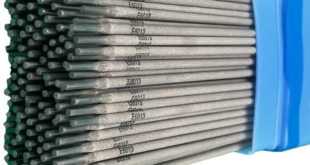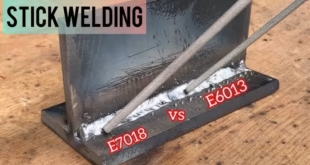The Challenges of Metal Identification in Welding: How to Overcome Them
Introduction
Metal identification is a crucial aspect of welding that is often overlooked, yet it is a fundamental step in ensuring the success of any welding project. Identifying the type of metal being welded is essential to determine the appropriate welding process, filler material, and other parameters needed to achieve a strong, high-quality weld.
However, identifying the metal being welded can be challenging. Different types of metals look similar, and many factors can affect the appearance and properties of a metal, including the manufacturing process, age, and damage caused by corrosion or other factors. Additionally, identifying the metal being welded is not always straightforward and requires specialized knowledge, skills, and equipment.
This article will explore the challenges of metal identification in welding and how to overcome them. We will discuss common challenges that welders face when identifying metals, including a lack of knowledge and training in metal identification, difficulty distinguishing between similar-looking metals, and variation in metal composition due to different manufacturing processes. We will also outline strategies to overcome these challenges, such as proper training and education, the use of specialized tools and techniques, collaboration with other professionals, and proper storage and handling of metals.
In addition, this article will present a case study to demonstrate how these strategies can be applied in a real-world welding project with challenging metal identification requirements. By understanding the challenges of metal identification in welding and how to overcome them, welders can ensure that their welding projects are successful and achieve high-quality, durable welds.

Common Challenges in Metal Identification
Lack of knowledge and training in metal identification
One of the most significant challenges that welders face when identifying metals is a lack of knowledge and training in metal identification. Many welders may not have received adequate training on how to identify different types of metals, which can result in errors and mistakes during the welding process. Identifying metals correctly requires a basic understanding of metallurgy, including the properties and characteristics of different types of metals.
Difficulty distinguishing between similar-looking metals
Another common challenge in metal identification is distinguishing between similar-looking metals. Some metals, such as aluminum and stainless steel, can look very similar to the untrained eye. This can result in mistakes in choosing the right welding process or filler material, leading to weak welds and potential safety hazards.
Variation in metal composition due to different manufacturing processes
The composition of metals can vary depending on the manufacturing process used to create them. For example, steel produced through the Bessemer process will have different properties than steel produced through the electric arc furnace process. The composition of metals can also vary due to differences in the raw materials used or the addition of alloys. These variations can make it challenging to identify the metal being welded accurately.
Corrosion and other types of damage to the metal that affect its appearance
Corrosion and other types of damage to the metal can affect its appearance and make it challenging to identify the metal being welded. Corrosion can change the color, texture, and overall appearance of the metal, making it difficult to determine its composition. Other types of damage, such as warping or bending, can also affect the appearance and properties of the metal, making it challenging to identify it correctly.
Overall, identifying metals accurately in welding is crucial to ensure the success of any welding project. By understanding the common challenges faced in metal identification, welders can take steps to overcome these challenges and ensure that they are working with the correct type of metal for their welding project.
Overcoming Metal Identification Challenges
Importance of proper training and education in metal identification
To overcome the challenge of a lack of knowledge and training in metal identification, welders should prioritize receiving proper training and education in metal identification. This may involve taking courses or workshops that focus specifically on metallurgy and metal identification. Some welding programs may also include metal identification as part of their curriculum. By investing in their education, welders can gain the necessary knowledge and skills to identify different types of metals accurately.
Use of specialized tools and techniques for metal identification
In addition to proper training and education, the use of specialized tools and techniques can aid in metal identification. Some of the tools and techniques that welders can use to identify metals include chemical tests, magnetic testing, and x-ray fluorescence spectroscopy. Chemical tests involve applying a reagent to the metal surface to identify the presence of specific metals. Magnetic testing involves using a magnet to determine if the metal is ferrous or non-ferrous. X-ray fluorescence spectroscopy involves using x-rays to determine the composition of the metal.
Collaboration with other professionals
Collaboration with other professionals, such as metallurgists or materials engineers, can also aid in metal identification. These professionals have specialized knowledge in metallurgy and can provide expertise in identifying difficult-to-identify metals. They can also provide guidance on the appropriate welding processes and filler materials to use for a particular metal.
Proper storage and handling of metals
Proper storage and handling of metals is crucial to prevent corrosion and other types of damage that can affect the appearance and properties of the metal. Welders should store metals in a dry, clean, and well-ventilated area to prevent moisture buildup and corrosion. They should also handle the metal with care to prevent scratches or other types of damage that can affect its appearance.
By implementing these strategies, welders can overcome the challenges of metal identification in welding and ensure that they are working with the correct type of metal for their welding project. This, in turn, can help to achieve high-quality and durable welds.
Identifying Metals for Welding: A Guide to Methods and Techniques
In the world of welding, understanding the type of metal you’re working with is crucial for achieving successful results. Whether you’re repairing a broken piece of machinery or starting a new welding project, knowing the metal’s composition is necessary to determine the proper welding techniques and avoid costly mistakes. In this article, we’ll outline several methods for identifying metals, including visual and auditory examination, as well as various tests such as magnet, hardness, spark, oxyfuel, and flame tests. Additionally, we’ll provide specific identification methods for different types of metals commonly used in welding, such as carbon steel, stainless steel, cast iron, aluminum, copper, bronze, brass, titanium, and magnesium.
Visual Examination
One of the most accessible and straightforward ways to identify metals is through visual examination. The metal’s external appearance can provide useful information to categorize or identify the metal. Consider the following characteristics when examining metal visually:
Color: While most metals are light gray, some have distinct colors such as copper’s reddish hue or brass’s golden tint.
Corrosion: The presence and depth of rust or other corrosion can indicate the type of metal.
Coatings: Some metals have characteristic coatings, such as the zinc coating of galvanized steel or the chromium coating of bronze or zinc workpieces.
Surface Texture: Different metals have varying surface textures, such as a polished mirror-like surface on stainless steel or a coarse surface on cast iron.
Metal Shape: The shape of the metal can also provide a clue to its composition, such as tool steel stock being small, square, or round bars.
Auditory Examination
The sound of the metal can also provide useful information for identifying the metal. Experienced welders can often recognize the sound of different metals when struck. A high-pitched ringing sound usually indicates a hard metal such as cast iron or tool steel. A dull thud sound, on the other hand, indicates a softer metal such as aluminum or copper.
Weight
The weight of the metal can also give an indication of its composition. Experienced welders can often tell the difference between different metals by their weight. For example, cast iron is generally heavier than aluminum or copper.
Magnet Test
The magnet test involves holding a magnet near the metal and observing its behavior. Ferrous metals such as iron and steel are magnetic, while non-ferrous metals such as aluminum and copper are not. However, some stainless steels and other alloys may exhibit weak magnetic properties.
Hardness Test
The hardness test involves using a hardness tester or a file to scratch the metal’s surface. Harder metals such as tool steel and cast iron will not scratch easily, while softer metals like aluminum and copper will.
Spark Test
The spark test involves grinding the metal’s surface and observing the sparks produced. Different metals produce different types of sparks, depending on their composition. For example, carbon steel produces long, straight sparks, while cast iron produces sparks with a branching effect.
Oxyfuel Test
The oxyfuel test involves heating the metal with a torch until it reaches a molten state, and then observing the color and behavior of the molten metal. Different metals have different melting points and behaviors when heated, providing useful information for identification.
Flame Test
The flame test involves holding the metal in a flame and observing its behavior. Different metals react differently to heat, producing different colors and patterns.
Metal Identification
Kits For higher accuracy, metal identification kits are available that use specialized instruments to identify metals. These kits can detect specific elements in the metal, providing accurate identification.
Specific Identification Methods
The following are specific methods for identifying different types of metals commonly used in welding:
- Carbon steel: Usually gray in color and magnetic.
- Stainless steel: Resistant
Case Study: Overcoming Metal Identification Challenges in a Real-World Welding Project
Welding is an important process in many industrial and construction applications. In a real-world welding project, the identification of the metal being welded is crucial to ensure proper welding procedures are followed. This is because different metals have different welding properties and require different welding techniques. In some cases, metal identification can be challenging due to various factors such as corrosion, oxidation, or surface contaminants.
In this case study, we will discuss a welding project that presented challenging metal identification requirements and how these challenges were overcome using the strategies discussed above.
Brief Description of the Welding Project
The welding project involved the construction of a pipeline for transporting gas in a petrochemical plant. The pipeline was made up of various sections, each made of different metals. The client required that the welding procedures used should be specific to the metal being welded to ensure the integrity of the pipeline.
The initial inspection revealed that some of the metals used in the pipeline were not clearly marked or identified, making it difficult to determine the appropriate welding procedures.
Challenges Faced
The main challenge faced in this project was the identification of the metals used in the pipeline. The presence of corrosion and oxidation made it difficult to identify the metals by visual inspection alone. In addition, the use of different metals in the same section of the pipeline further complicated the identification process.
Strategies Used to Overcome the Challenges
The following strategies were used to overcome the challenges faced in identifying the metals used in the pipeline:
Non-Destructive Testing (NDT)
Non-destructive testing methods such as X-ray fluorescence (XRF) and ultrasonic testing (UT) were used to identify the metals used in the pipeline. XRF is a non-destructive method that analyzes the elemental composition of materials using X-rays. UT, on the other hand, uses sound waves to detect defects or inconsistencies in the material. These methods allowed for the identification of the metals without destroying or damaging the pipeline.
Consultation with Material Suppliers
The welding team consulted with material suppliers to determine the possible metals that could have been used in the pipeline. The suppliers were able to provide information on the various grades and alloys of metals that were commonly used in pipelines.
Laboratory Analysis
Samples of the metal were taken from the pipeline and sent to a laboratory for analysis. The laboratory used techniques such as optical emission spectroscopy (OES) and energy-dispersive X-ray spectroscopy (EDS) to determine the composition of the metal. This allowed for a more accurate identification of the metals used in the pipeline.
Outcome
The use of NDT methods, consultation with material suppliers, and laboratory analysis allowed for the accurate identification of the metals used in the pipeline. This information was used to determine the appropriate welding procedures for each section of the pipeline. The welding procedures were followed, and the pipeline was constructed to meet the client’s requirements.
FAQs
How do you identify metal for welding?
Metal identification for welding involves examining the physical and chemical properties of the metal to determine its composition. This includes identifying the type of metal, its grade, and any treatments it has undergone. Common methods of identification include visual inspection, spark testing, magnetic testing, and chemical analysis using various testing equipment.
What is metal identification?
Metal identification is the process of determining the composition of a metal by examining its physical and chemical properties. The identification process involves determining the type of metal, its grade, and any treatments it has undergone. Accurate metal identification is crucial in welding to ensure proper selection of the welding process, filler metal, and heat treatment procedures.
How do you test metal for identification?
Metal identification can be done using various methods such as visual inspection, spark testing, magnetic testing, and chemical analysis. Visual inspection involves examining the physical properties of the metal, such as color, texture, and surface finish. Spark testing involves grinding the metal and observing the sparks produced, while magnetic testing involves checking the metal’s magnetic properties. Chemical analysis involves using testing equipment such as XRF analyzers, optical emission spectrometers, and handheld spectroscopy devices.
What are the 4 types of welding metals?
The four types of welding metals are carbon steel, stainless steel, aluminum, and copper. Carbon steel is the most common type of metal used in welding, while stainless steel is often used in applications that require corrosion resistance. Aluminum is used for lightweight applications, and copper is used for electrical conductivity.
What is spark test in metal identification?
The spark test is a method of metal identification that involves grinding a small portion of the metal and observing the sparks produced. Different metals produce different types of sparks that can be used to identify the metal. For example, carbon steel produces short, bright sparks, while stainless steel produces fewer, duller sparks.
What is a weld identification line?
A weld identification line is a marking or label used to identify a weld joint. The identification line typically includes information such as the welder’s name or identification number, the date the weld was made, the type of weld joint, and any other relevant information.
What are the 7 basic welding?
The seven basic welding processes are:
- Shielded Metal Arc Welding (SMAW)
- Gas Tungsten Arc Welding (GTAW)
- Gas Metal Arc Welding (GMAW)
- Flux-Cored Arc Welding (FCAW)
- Submerged Arc Welding (SAW)
- Plasma Arc Welding (PAW)
- Electron Beam Welding (EBW)
What 3 metals are commonly welded?
The three metals commonly welded are carbon steel, stainless steel, and aluminum. Carbon steel is the most commonly welded metal, while stainless steel and aluminum are often used in applications that require corrosion resistance and lightweight properties, respectively.
What are the 5 basic weld types?
The five basic weld types are:
These types of welds can be made using various welding processes and techniques, including SMAW, GTAW, GMAW, and FCAW.
Conclusion
In conclusion, metal identification is an essential process in welding that ensures the success and quality of the final product. Proper identification of the metal type helps in selecting the appropriate welding process, welding filler metal, and heat treatment procedures. Failure to identify the metal type can lead to structural defects, reduced strength, and overall failure of the welded joint.
One of the main challenges in metal identification is that metals can have similar physical characteristics, making it difficult to distinguish between them. Additionally, metals may have undergone various treatments that further complicate the identification process. However, advancements in technology and the availability of portable tools such as XRF analyzers, optical emission spectrometers, and handheld spectroscopy devices have made the process more accessible and accurate.
It is crucial to take steps to overcome the challenges of metal identification, such as ensuring proper training and expertise in metal identification, using accurate and reliable testing methods, and maintaining up-to-date knowledge of the various metal types and their properties. By taking these steps, welders and manufacturers can ensure that their products meet the necessary quality standards and are safe for their intended use.
In summary, metal identification plays a crucial role in welding, and it is essential to overcome the challenges associated with it to ensure the success and quality of the final product. The use of accurate and reliable testing methods, proper training and expertise, and staying up-to-date with the latest advances in technology can help achieve this goal.
 Welding of Welders All about Welding and Welders
Welding of Welders All about Welding and Welders



